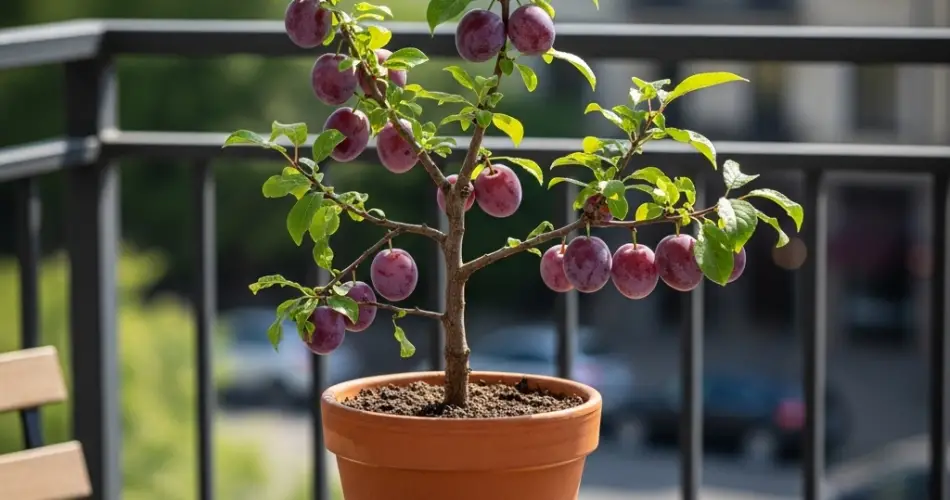Plums are delicious, nutritious fruits that can be enjoyed fresh, dried, or used in cooking. If you’ve ever wondered whether you could grow your own plum tree from the pit of a store-bought or homegrown fruit, the answer is yes! With a bit of patience and the right technique, germinating plum seeds at home is entirely possible. This guide will walk you through how to germinate, plant, and grow plum trees from the stone inside the fruit.
Step 1: Select and Prepare the Seeds
You can use seeds from any type of plum—European, Japanese, red, yellow, or wild varieties. Start by choosing fully ripe, healthy fruits.
-
Remove the pit (stone) from the plum.
-
Clean the seed thoroughly. Wash off any remaining fruit flesh to avoid mold during the germination process.
-
Dry the seed for a day or two on a paper towel at room temperature.
Step 2: Crack the Pit (Optional, but Speeds Up Germination)
The hard outer shell of the plum pit can slow down germination. Carefully cracking the pit will allow the seed inside to sprout more easily.
-
Use a nutcracker or pliers.
-
Apply gentle pressure until you hear a crack but avoid crushing the inner seed.
-
If you don’t want to crack the pit, you can skip this step, but germination may take longer.
Step 3: Cold Stratification (Mimicking Winter)
Plum seeds need a period of cold dormancy before they will sprout. This process is called cold stratification and mimics natural winter conditions.
Method 1: In the Fridge
-
Wrap the seed in moist paper towel or peat moss.
-
Place it in a plastic zip-lock bag or a sealed container.
-
Label it with the date and store it in the refrigerator (not freezer) at around 3–5°C (37–41°F).
-
Check periodically to make sure the paper remains moist.
-
After 6 to 10 weeks, you may notice the seed starting to sprout. If you cracked the pit earlier, sprouting may occur faster.
Step 4: Planting the Germinated Seed
Once the seed has developed a small root, it’s time to plant it.
-
Use a small pot with drainage holes and good-quality potting mix.
-
Plant the seed about 2–3 cm (1 inch) deep, root tip facing downward.
-
Water gently and place the pot in a warm, bright location out of direct sunlight.
-
Keep the soil moist but not soggy. Germination continues as the seed pushes upward through the soil.
Step 5: Caring for the Young Seedling
As the seedling grows, you’ll need to support its development:
-
Light: Ensure the plant gets at least 6 hours of indirect sunlight daily.
-
Water: Maintain regular watering, letting the topsoil dry slightly between waterings.
-
Fertilizer: Once the seedling has developed several sets of leaves, you can begin feeding with a diluted organic fertilizer once every 2–3 weeks.
Step 6: Transplanting Outdoors
When the seedling is strong and the weather is suitable (spring is ideal), you can transplant your plum tree into the ground or a larger pot.
-
Choose a sunny spot with well-draining soil.
-
Dig a hole large enough to accommodate the root ball.
-
Water well after transplanting and apply a layer of mulch around the base to retain moisture.
If you live in an area with cold winters, consider keeping the young tree in a container for the first year or two so you can move it indoors during harsh weather.
Patience Pays Off
Plum trees grown from seed can take 3 to 6 years to begin producing fruit. While they may not always be identical to the parent tree due to cross-pollination, the result can be a unique and flavorful new variety.
To increase chances of fruiting:
-
Plant multiple trees to encourage pollination.
-
Choose grafted plum trees for consistency if fruiting time is a priority.
-
Prune the tree regularly to encourage a healthy structure and improve airflow.
Tips for Success
-
Avoid using seeds from hybrid plums, as they may be sterile or produce unpredictable results.
-
Be patient with germination—it can take weeks or even months.
-
Keep an eye out for pests or fungal issues in the seedling stage. Use natural remedies if necessary.
Final Thoughts
Growing a plum tree from seed is a satisfying and sustainable way to add fruit trees to your garden. With just a bit of preparation and care, a simple plum pit can transform into a thriving tree that offers shade, beauty, and sweet rewards for years to come. Whether you’re gardening in a backyard or on a balcony, germinating plum seeds is a rewarding journey worth trying.
Let nature guide the process, and soon you may find yourself harvesting delicious plums from a tree you grew yourself—from seed to fruit!



